13 Wild Animals in Guinea [Wildlife in Guinea]
Want to know more about the wildlife in Guinea?
Discover 13 wild animals in Guinea in this post, as well as interesting facts about them. 🇬🇳
Learn All About Guinean Animals
Ready to learn all about Guinean animals?
I’ve always been fascinated by animals, and by how they can be so different from one country to another. In this guide, we’ll focus on the many animals Guinea has on the land, in the sky, and underwater.
I’ve split the guide into 4 categories:
- Native animals from Guinea
- Endangered animals of Guinea
- What is Guinea national animal?
- How many animals native to Guinea?
Let’s dive in right away with our first category!
Native Animals from Guinea
Guinea, formally known as the Republic of Guinea, is an African country located in the western part of the continent, below the Sahara and next to the Atlantic Ocean. It has a long history of coups d’état, and it used to be a French colony. It is bordered by Senegal, Guinea-Bissau, Mali, the Ivory Coast, Liberia, and Sierra Leona, and its capital and largest city is Conakry, which counts more than 1,660,000 inhabitants.
An interesting part of the country that I wanted to tackle is its wildlife. In light of that, I have listed the best of it, and I hope you will love learning what animals live in Guinea.
Here’s the Guinea animals list.
1. Western chimpanzee
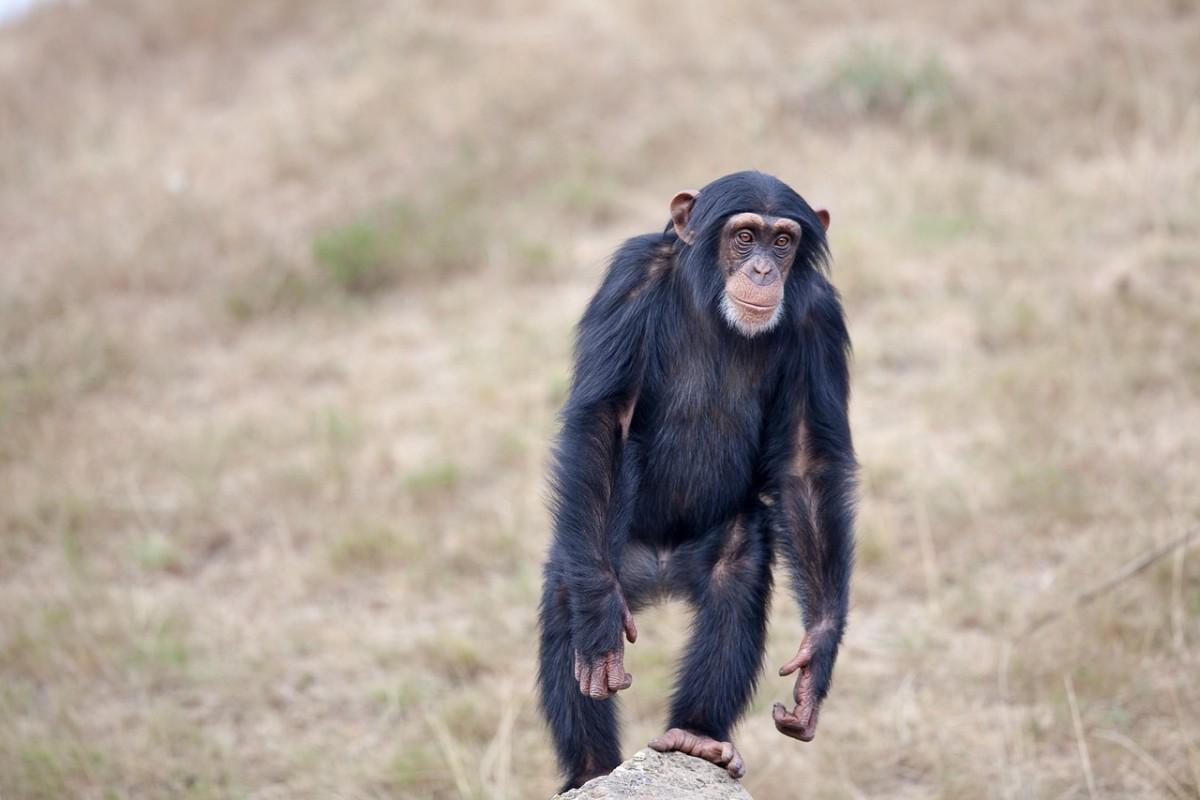
- Name: Western chimpanzee
- Scientific name: Pan troglodytes verus
- Conservation status:
The western chimpanzee, also known as the West African chimpanzee, is a subspecies of the common chimpanzee. As its name suggests, it is native to the western part of Africa, namely the Ivory Coast, Guinea, Mali, Sierra Leone, and Liberia, but some populations were already spotted in other areas.
The range of the western chimpanzee has drastically dwindled over the centuries: while it used to be found from Senegal to the Niger River, it is now much more restricted.
2. Red river hog
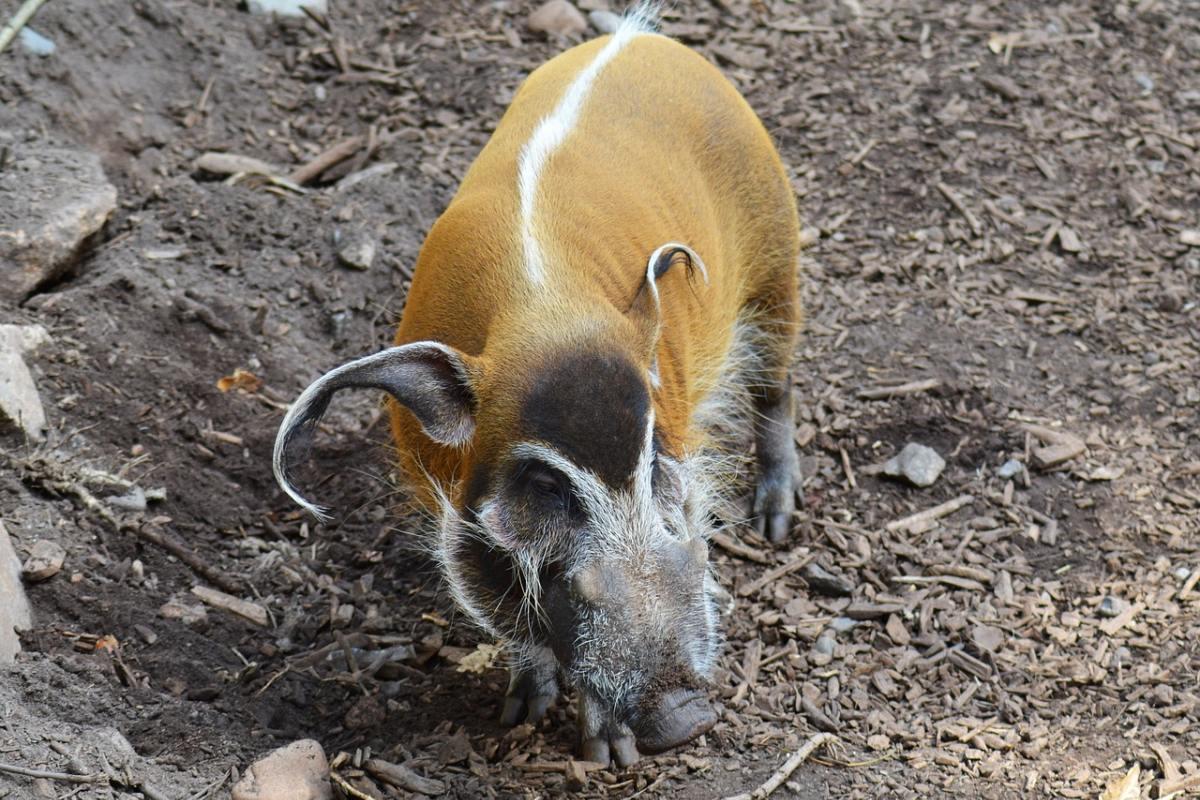
- Name: Red river hog
- Scientific name: Potamochoerus porcus
- Conservation status:
The red river hog, also known as the bushpig, is a species of wild pig native to West Africa. It can mostly be found in Congolese and Guinean forests and is rarely seen outside of rainforests, where it prefers to stay near swamps or rivers.
While it is often active by day, this wild pig is mostly crepuscular and nocturnal. It lives in groups of about 6 to 10 members, with a single adult male, several mature females, and their offspring.
3. Giant eland
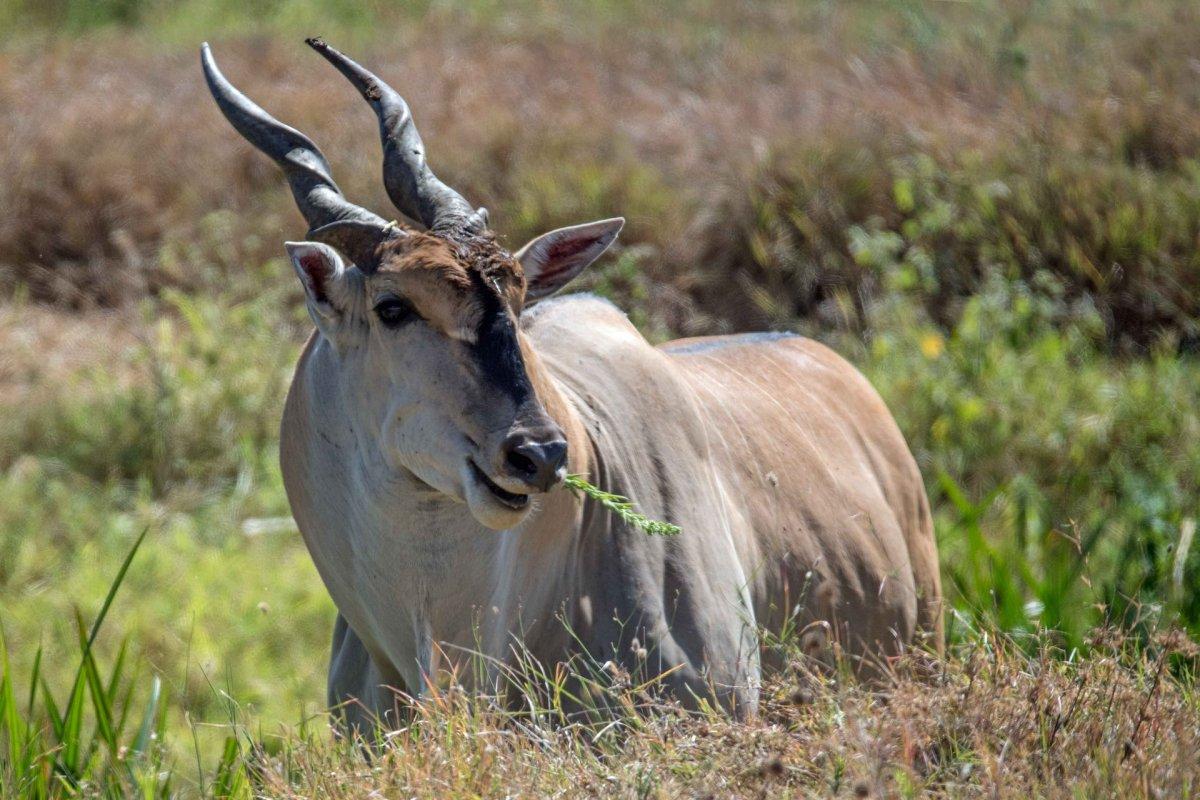
- Name: Giant eland
- Scientific name: Taurotragus derbianus
- Conservation status:
The giant eland, also known as the Lord Derby eland, is a species of antelope native to small areas of Central and West Africa. It lives in open forests and savanna, and it is the largest species of all antelopes, as its name suggests.
This eland is no longer present in several countries such as Ghana and Togo, mostly due to overhunting and poor professional wildlife management.
4. Puff adder
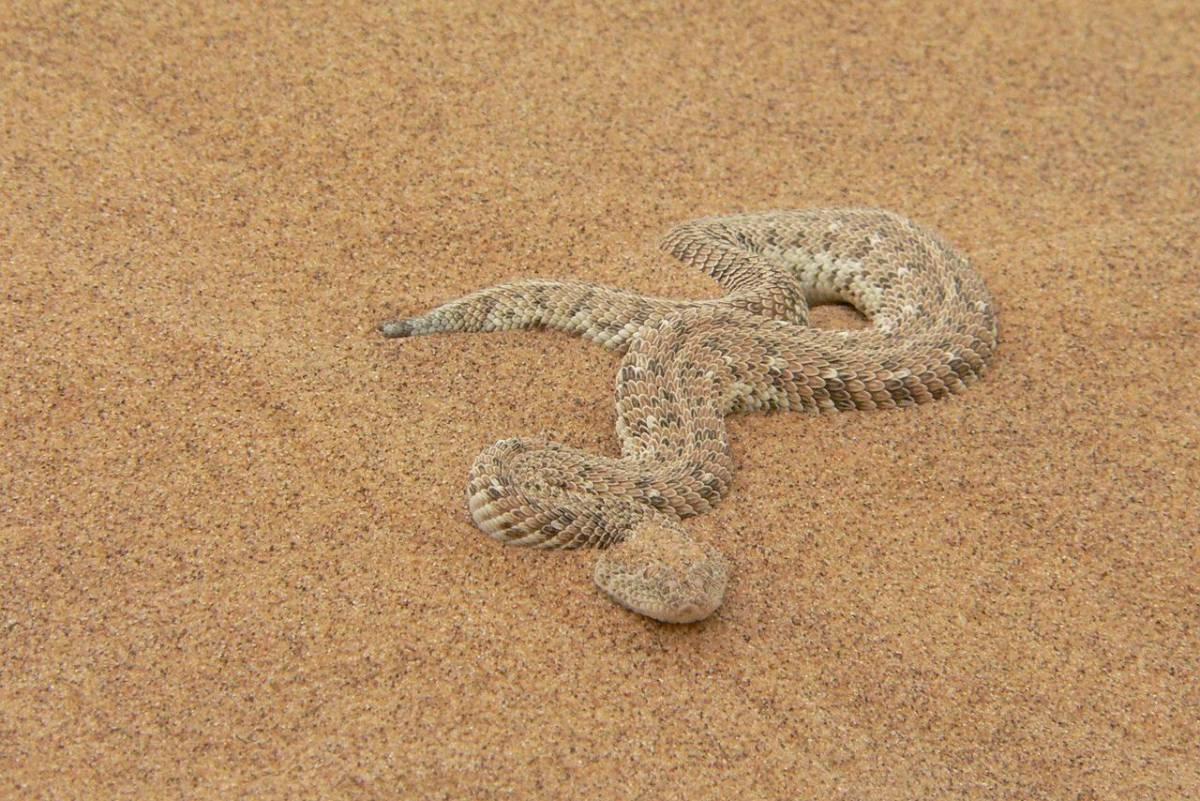
- Name: Puff adder
- Scientific name: Bitis arietans
- Conservation status:
The puff adder, also known as the African puff adder, is a species of venomous viper native to Morocco, the Arabian Peninsula, and much of sub-Saharan Africa. While not having the most lethal venom, it is the most dangerous snake in Africa, causing the most snakebite fatalities, mostly due to its wide distribution and aggressive behavior.
This viper is very well camouflaged and preys by night on mammals, amphibians, birds, and lizards.
5. Hippopotamus
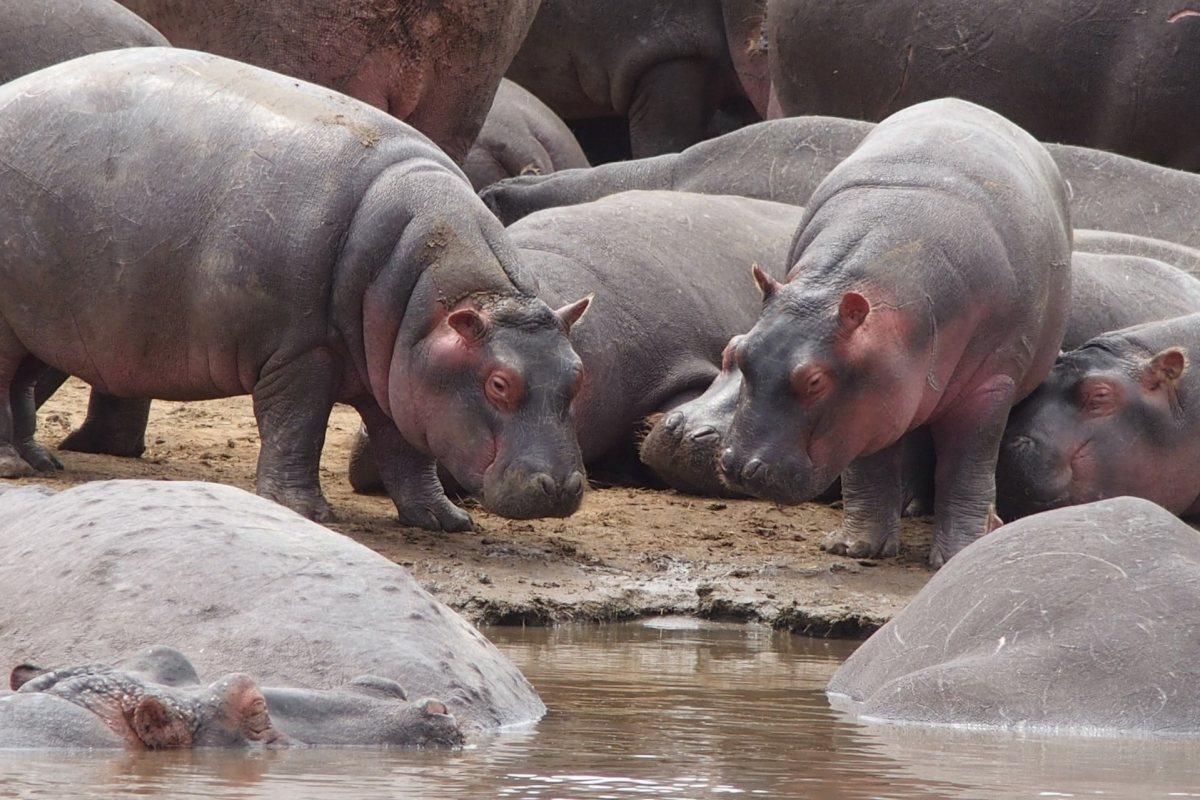
- Name: Hippopotamus
- Scientific name: Hippopotamus amphibius
- Conservation status:
The hippopotamus, informally known as the hippo, is a large species of semi-aquatic mammal, and the third-largest land mammal in the world after the elephant and the rhinoceros.
This ungulate is native to much of sub-Saharan Africa, and it inhabits mangrove swamps, lakes, and rivers. Be careful though, as innocent as the hippopotamus looks, it is actually one of the most dangerous animals on the planet, being highly aggressive and charging incredibly fast!
6. African buffalo
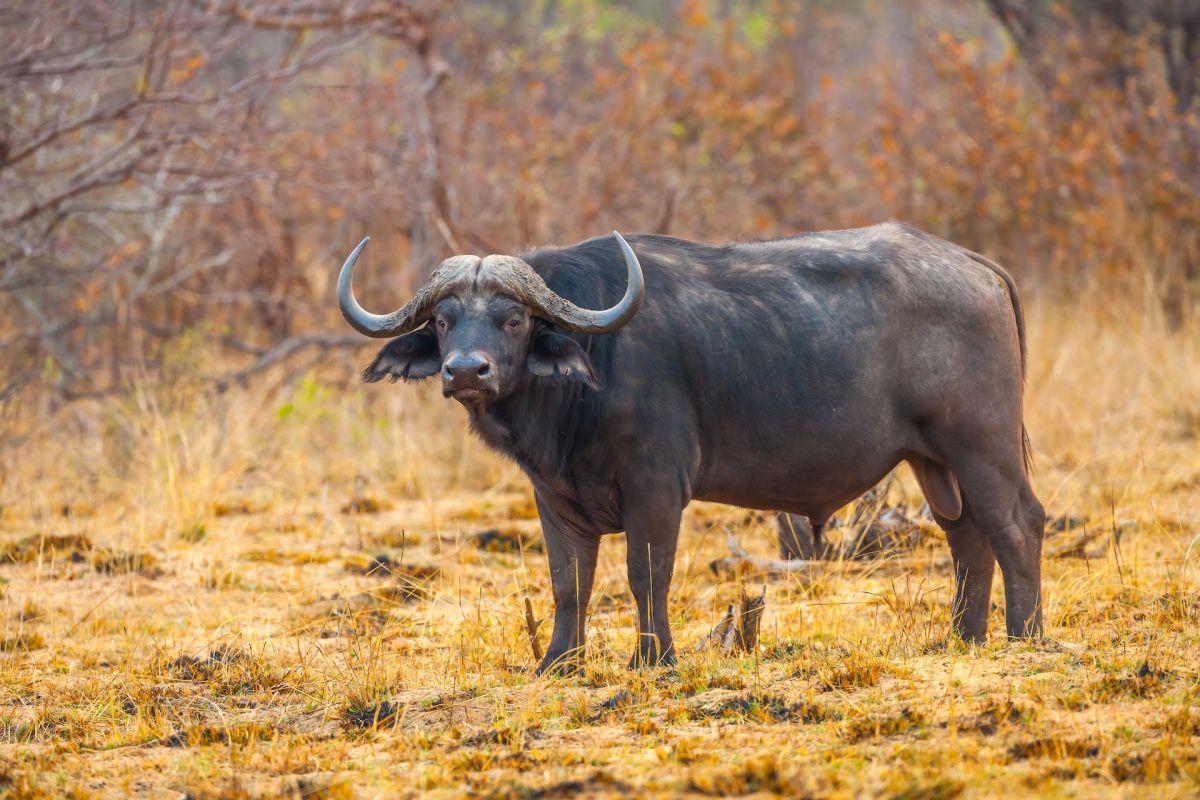
- Name: African buffalo
- Scientific name: Syncerus caffer
- Conservation status:
The African buffalo is a large species of bovine native to sub-Saharan Africa. Further divided into two subspecies, the Forest buffalo and the Cape buffalo, it has characteristic horns that form a strong bone shield across the top of its head.
This buffalo, despite its appearance, has nothing to do with domestic cattle, and it has never been domesticated, mostly due to its unstable, unpredictable temperament.
7. West African crocodile
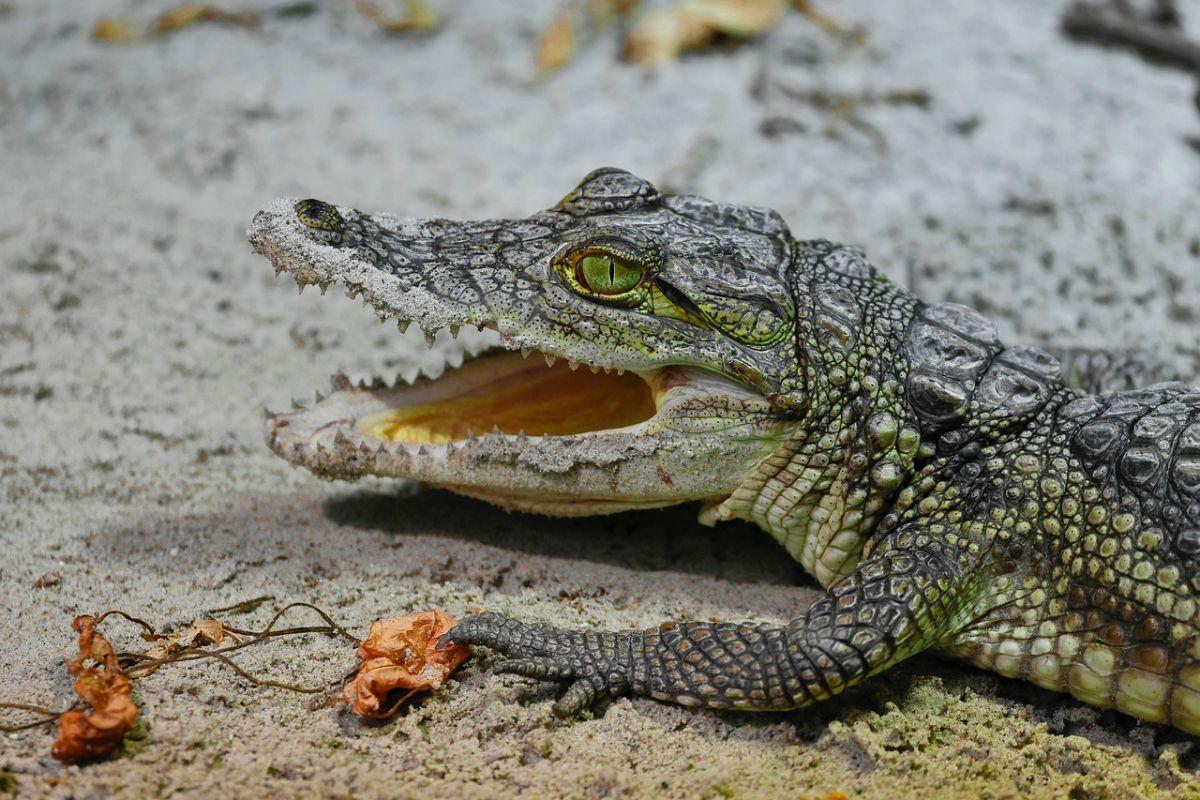
- Name: West African crocodile
- Scientific name: Crocodylus suchus
- Conservation status:
While not many African crocodiles are as widely known as the Nile crocodile, the West African crocodile, also known as the sacred crocodile or the desert crocodile, is one of them. It is smaller and less aggressive than its Egyptian counterpart, but it can still reach up to 4 m / 13 ft in length.
Several attacks on humans have already been recorded, including fatal ones. Traditional peoples, who live very close to this species, are particularly threatened, but they usually revere the animal and do not attack them.
8. Nile monitor
- Name: Nile monitor
- Scientific name: Varanus niloticus
- Conservation status:
The Nile monitor, also known as the guana, the river leguaan, the water leguaan, or the African small-grain lizard, is a large species of monitor native to most of sub-Saharan Africa and the Nile Valley.
This species was also introduced to Florida, where it is considered an invasive species: it negatively impacts crocodile populations, raiding their nests, eating their eggs, and hunting their newborns. It is even said to feed on feral cats and domestic pets in some areas!
9. Guinea baboon
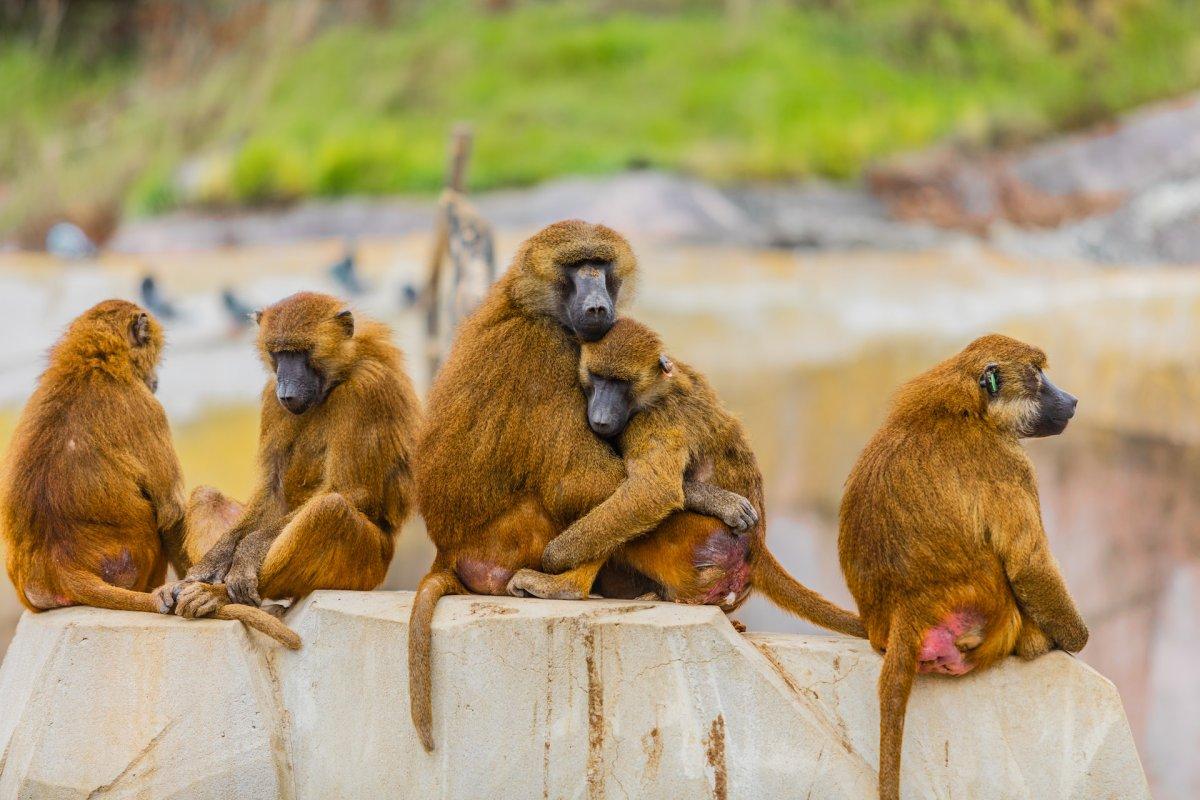
- Name: Guinea baboon
- Scientific name: Papio papio
- Conservation status:
The Guinea baboon, also known as the savanna baboon, is a species of Old World monkey native to a small area of West Africa, including Guinea (as its name implies), but also Gambia, Mali, Mauritania, and Senegal.
It lives in dry and gallery forests, but also in steppes and bush savannas, where it feeds on fruits, buds, and roots, among other things. It is diurnal and terrestrial and sleeps in trees to avoid predators.
10. West African lion
- Name: West African lion
- Scientific name: Panthera leo leo
- Conservation status:
The West African lion, also known as the Northern lion, is a rare species of lion that can be found in isolated and fragmented populations across Central and West Africa. It used to live in North Africa, West Asia, and southern Europe, but it is now locally extinct in these regions.
There are fewer than 250 individuals remaining in the wild, which is why it is considered critically endangered.
11. Zebra duiker
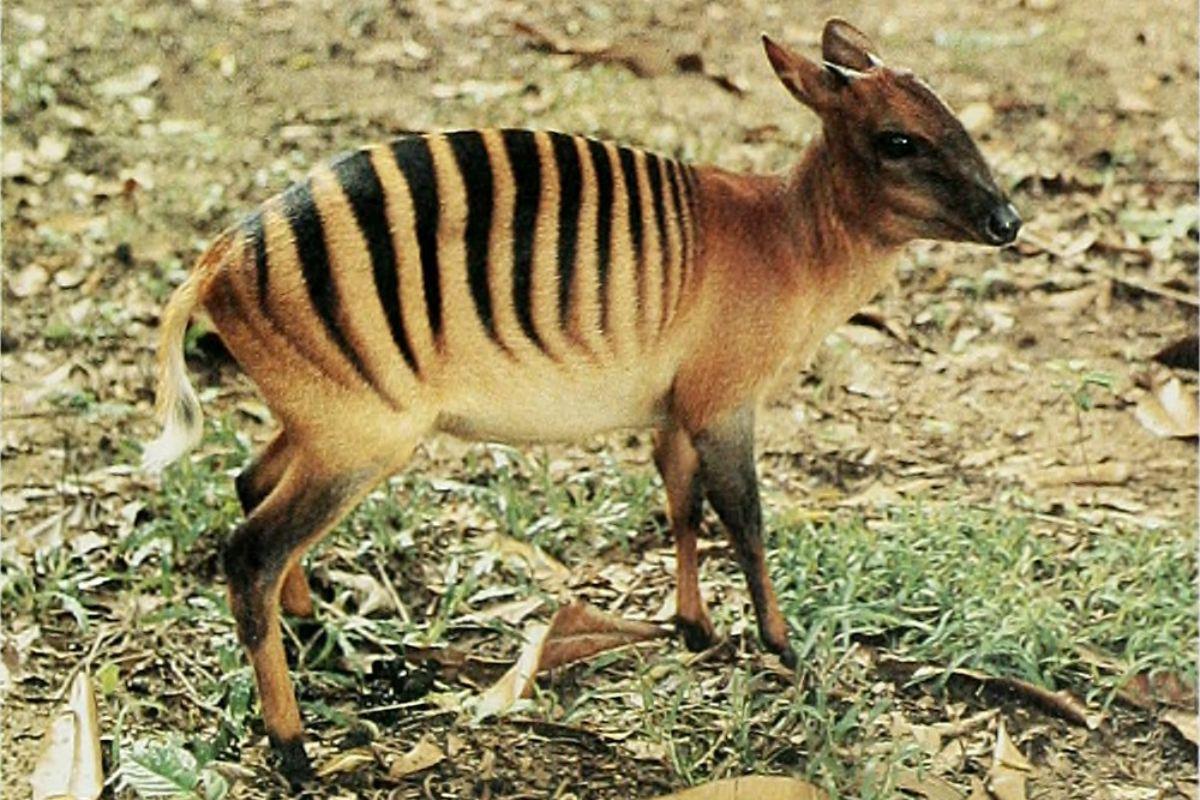
- Name: Zebra duiker
- Scientific name: Cephalophus zebra
- Conservation status:
The zebra duiker, also known as the stripped-back duiker or the banded duiker, is a species of small antelope native to a small area comprising Guinea, Sierra Leona, Liberia, and the Ivory Coast.
It is a ruminant that mostly feeds on fruit, seeds, and foliage, and will very rarely eat rodents, though this piece of information is not confirmed. What is certain is that it is a nocturnal animal that is solitary except during the breeding season.
12. Western green mamba
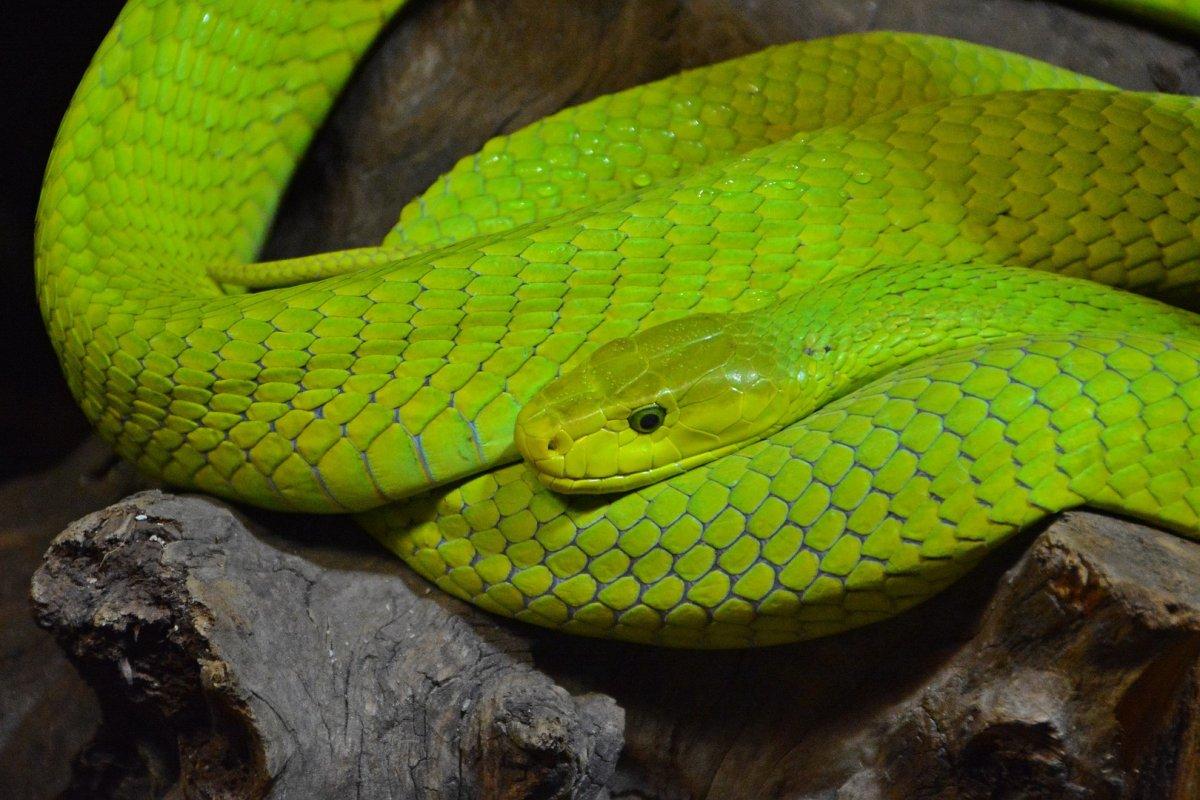
- Name: Western green mamba
- Scientific name: Dendroaspis viridis
- Conservation status:
The western green mamba is a species of highly venomous snake native to a small area of western Africa, including Guinea. Despite the obvious danger it presents, it is actually not very aggressive, and bites to humans are very rare; however, when they happen, they are mostly fatal.
This snake feeds on small mammals such as rodents, and it is very agile. It inhabits coastal rainforests and woodland regions and spends most of its time in the forest canopy.
13. Diana monkey
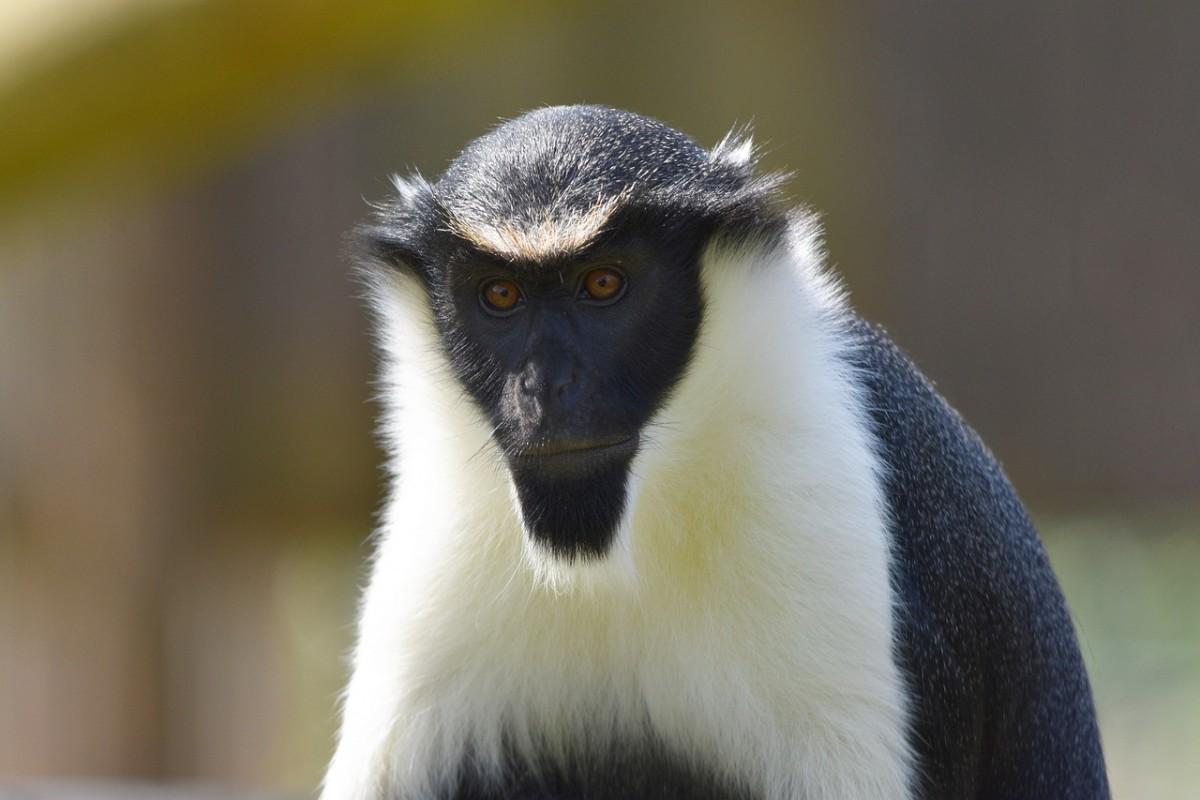
- Name: Diana monkey
- Scientific name: Cercopithecus diana
- Conservation status:
The Diana monkey is a species of Old World monkey native to the high canopy forests of, once again, Guinea, the Ivory Coast, Liberia, and Sierra Leone, and it was named after the Roman goddess Diana.
It is considered endangered because of habitat destruction and hunting for bushmeat: this monkey is now confined to coastal areas due to deforestation. Outside of that, native tribes also poach this animal for its luxury meat and as a commodity.
—
So there you have them, these were my 13 wild animals in Guinea. I hope you enjoyed this list and that you learned something new today.
In case you want to learn more about Guinea wildlife, feel free to keep reading, as I still have lots of things to tell you about:
Endangered Animals of Guinea
This is definitely the saddest part of the list, but it is very important to raise awareness. Because of this, let’s go through the list of endangered animals in Guinea.
Here are the animals in danger of extinction in Guinea.
- None
- Scalloped hammerhead
- Hooded vulture
- Mount Nimba viviparous toad
- Blackchin guitarfish
- African forest elephant
- and 25 more…
- Diana monkey
- Jentink’s duiker
- Chimpanzee
- Basking shark
- King colobus
- and 66 more…
To see the full list of endangered species in Guinea, head over to the International Union for Conservation of Nature’s Red List.
What is the National Animal of Guinea?
The national animal of Guinea is the African bush elephant.
Not very original, that’s for sure, but what a majestic and fantastic creature the African bush elephant is. It is truly a force of nature and one of the most emblematic animals in the entire continent.
It is probably what best represents Africa as a whole, and it is famous for being the largest land animal on the planet. Sadly, it is seriously threatened by poaching, diseases, and habitat loss.
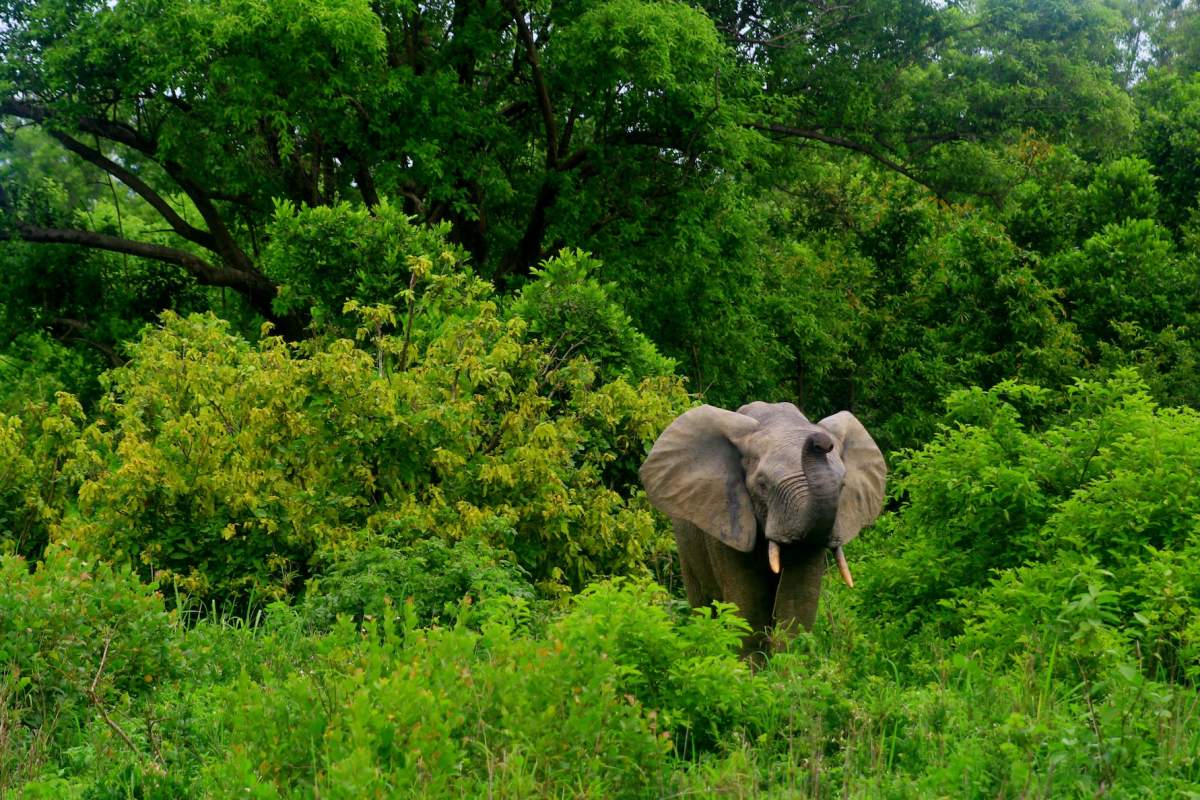
How Many Animals Native to Guinea?
What is the diversity of native animals in Guinea?
Let’s look at the total number of species of Chordata (mammals, birds, fishes, and reptiles).
Total number of animal species in Guinea: 2,328 (14,205 in total in sub-Saharan Africa)
More About Animals in the World!
Loved these Guinea animal facts? Want to see what animals live in other countries?
Then check out these posts:
Or click here to see ALL the facts up on the blog! Spoiler alert: there’s A LOT of them.
Share the knowledge! Click on the buttons below to share information about these famous animals in Guinea with your friends, and help them learn more about the world 🙂
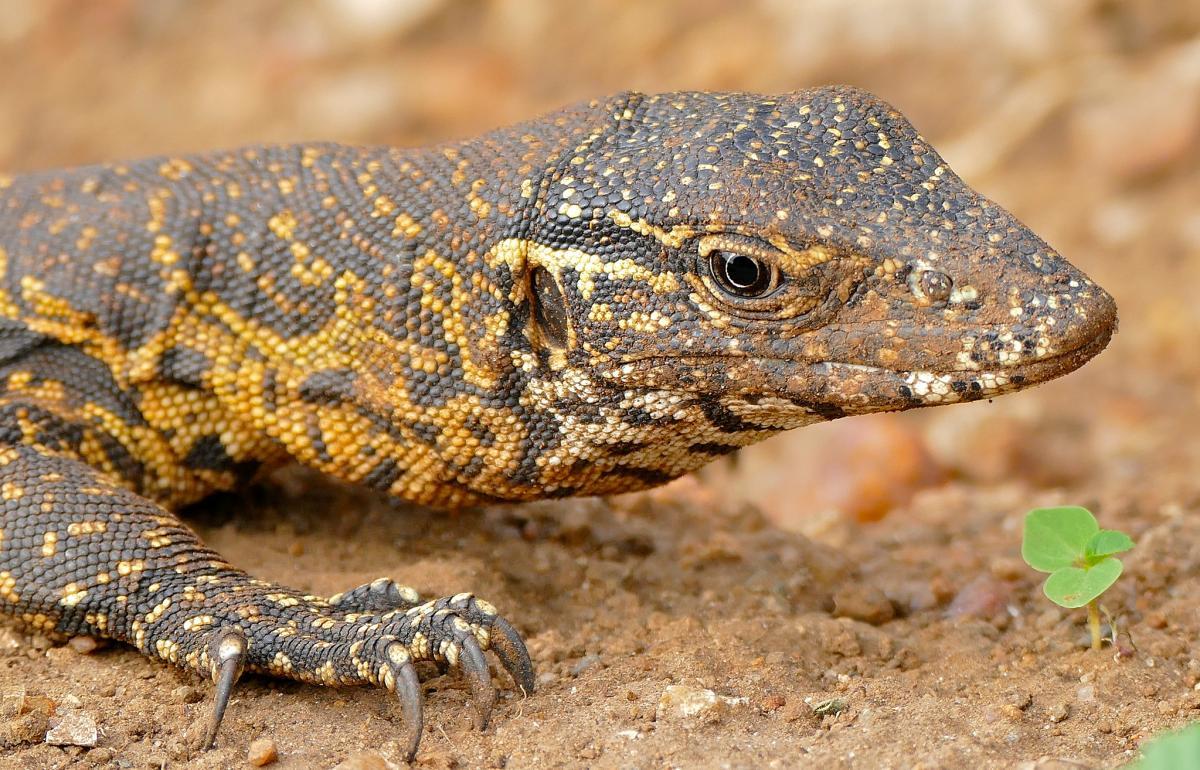
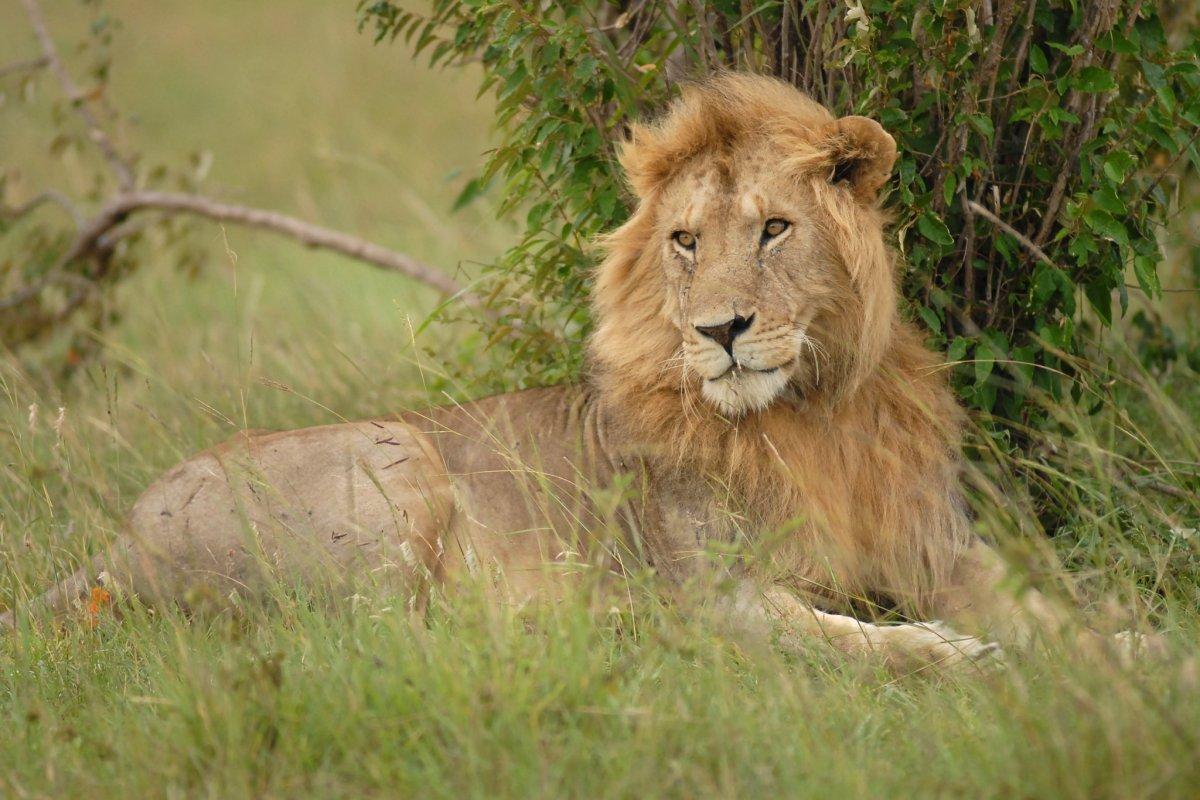

![16 Wild Animals in Serbia [Wildlife in Serbia]](https://www.kevmrc.com/wp-content/uploads/2022/08/16-wild-animals-in-serbia.jpg)
![77 Wild Animals in Kenya [Wildlife in Kenya]](https://www.kevmrc.com/wp-content/uploads/2022/12/77-wild-animals-in-kenya.jpg)
![24 Wild Animals in Vietnam [Wildlife in Vietnam]](https://www.kevmrc.com/wp-content/uploads/2022/12/24-wild-animals-in-vietnam.jpg)